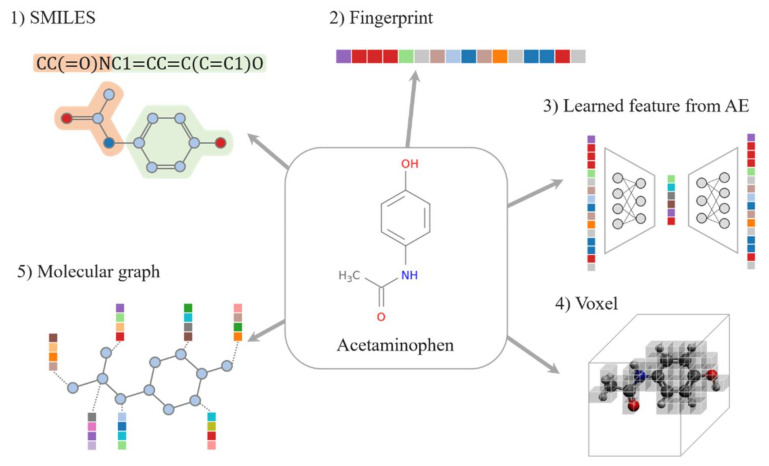Figure 1.
Different types of drug representations used in DL-based drug discovery. This figure shows the drug representations of acetaminophen, which is widely used to treat mild to moderate pain. (1) SMILES: a string that expresses structural features including phenol group and amide group. (2) Fingerprint: a 16-digit color-coded 64-bit MACCS key fingerprint. (3) Learned representations: In this case, it depicts the features learned from an autoencoder (AE). (4) Voxel: binary volume elements with atoms assigned to a cube with a fixed grid size. (5) Molecular graph: Each node encodes the network information of the molecular graph.

